Succession to the Crown: An introduction
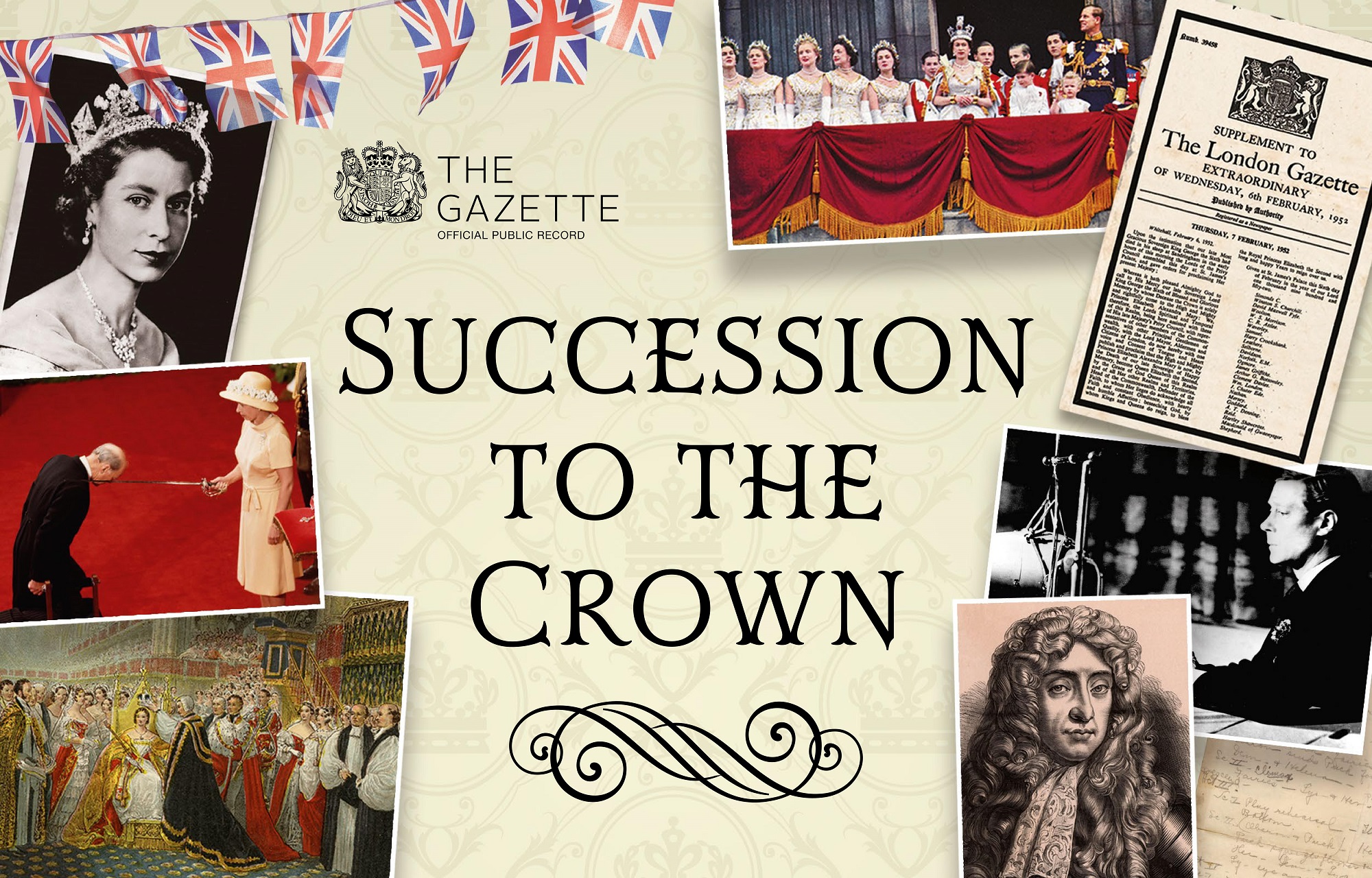
As the official public record since 1665, The Gazette has been recording successions to the Crown for over three centuries. As part of our ‘Succession to the Crown’ series, historian Russell Malloch looks through the archives at the coronations, emblems and honours of King Charles III and his predecessors, as described in The Gazette.
Introduction
This series of articles deals with the succession to the Crown, and The London Gazette’s reporting of matters relating to the transfer of the royal authority and the accession council, an event that happened in September 2022 when King Charles III came to the throne (Gazette issue 63812).
The Gazette has charted a variety of proceedings relating to the accession of a new sovereign since King Charles II was succeeded by his brother in 1685 (Gazette issue 2007), as well as many developments connected with the exercise of the royal authority that have influenced the structure of the British honours system since the late 17th century, including the creation of orders, decorations and medals.
The subject matter in this series can be considered under four broad sections:
- succession, accession and declaration
- coronation, preservation and delegation
- cyphers, seals and emblems
- swords and spurs
Each of these sections is considered briefly below, and then in more detail in a series of articles which examine what happened during each reign, starting with King James II in 1685 and ending with King Charles III.
Chapters
Succession to the Crown paperback
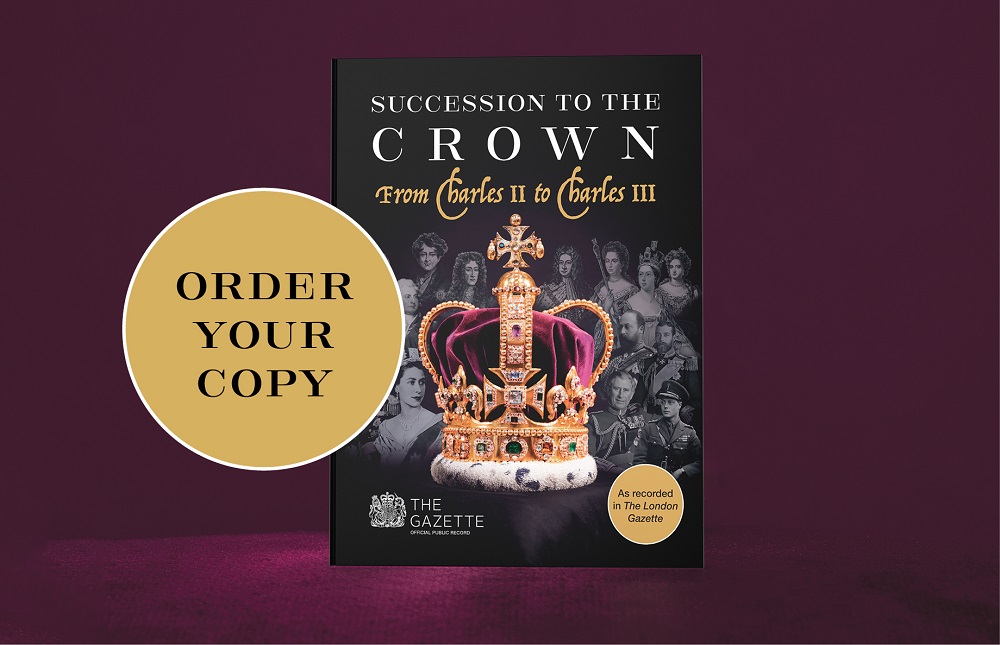
To celebrate the new king’s coronation, The Gazette’s Succession to the Crown series has been released in paperback.
Available to order now from the TSO Shop, the Succession to the Crown paperback explores the coronations, honours and emblems of the British monarchy, and includes an exclusive chapter on the accession of King Charles III.
Find out more in the link below.
Succession, accession and declaration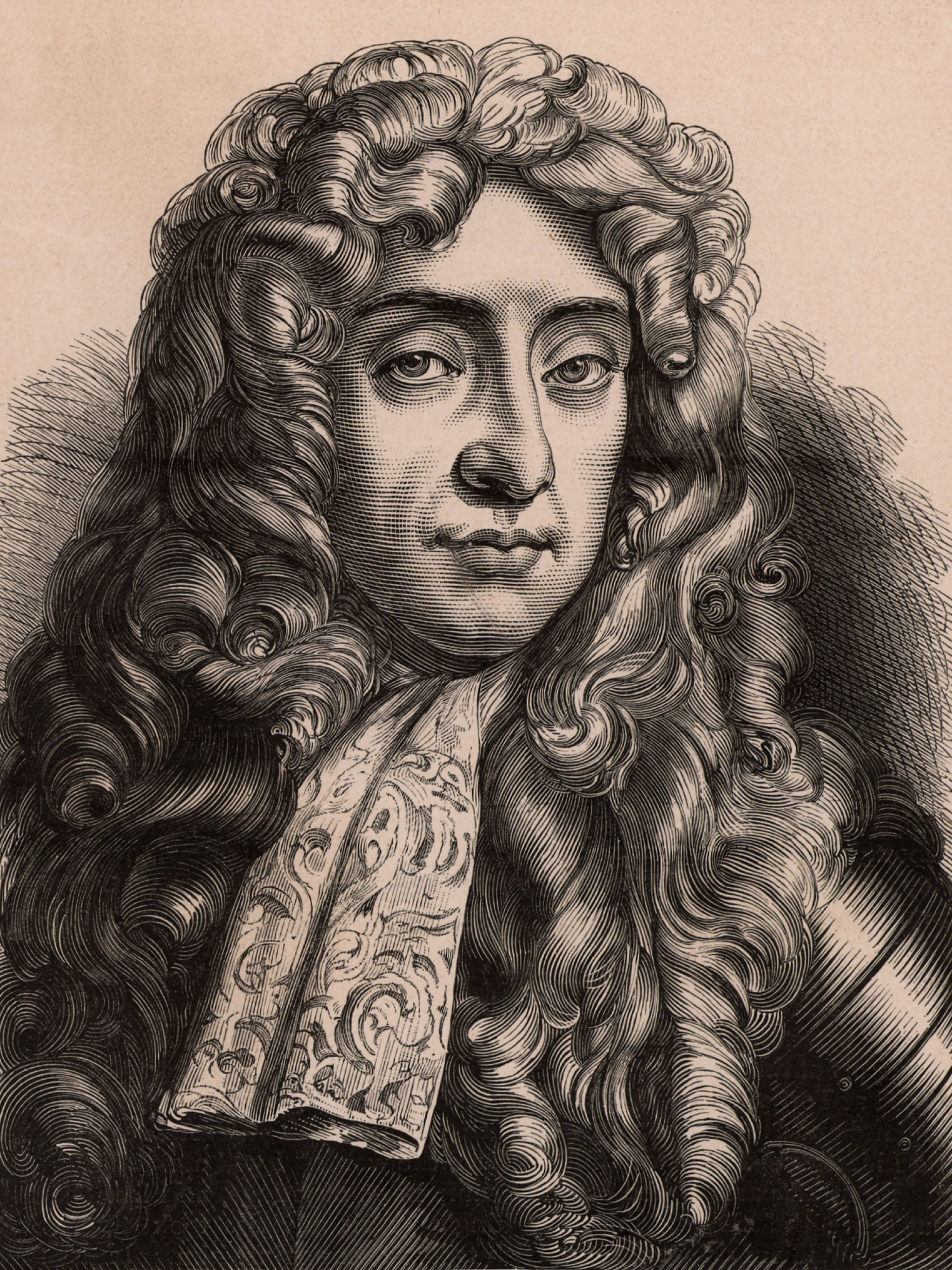
The succession of a sovereign occurs on the demise of the Crown, which is usually caused by the death of the monarch, as happened in 1685 when King Charles II expired, and most recently in 2022 with the death of Queen Elizabeth II. The Gazette has reported only two exceptions, which arose in 1689 when King James was deprived of the Crown after the Glorious Revolution (Gazette issue 2438), and in 1936 when King Edward VIII abdicated (Gazette issue 34349).
The transfer of the royal authority is the product of a web of legal fictions that has evolved over many centuries. The succession has not always been straightforward, and power has not always passed to the sovereign’s nearest relation, as matters of faith, gender, legitimacy and politics have influenced the names that appear in The Gazette.
Legitimacy determined the fate of the Crown in 1685, as King James succeeded his brother even although King Charles II had several sons, but they were unable to inherit the throne because of their mothers’ status. And in 1837 the Crown passed to Princess Victoria of Kent despite the fact that her uncle King William IV had a large family, but not by Queen Adelaide.
There was always a presumption in favour of the Crown passing to the eldest child, as happened in 1936 when the Prince of Wales succeeded King George V rather than one of his three younger brothers, or in 2022 when the Prince of Wales succeeded to the throne rather than his brothers Andrew or Edward.
Gender also influenced the destination of the royal authority, as The Gazette showed male children being preferred in 1760 when King George II was succeeded by his grandson rather than an older granddaughter (Gazette issue 10046), and in 1901 when Queen Victoria was followed by the Prince of Wales rather than his older sister, the dowager German empress (Gazette issue 27270).
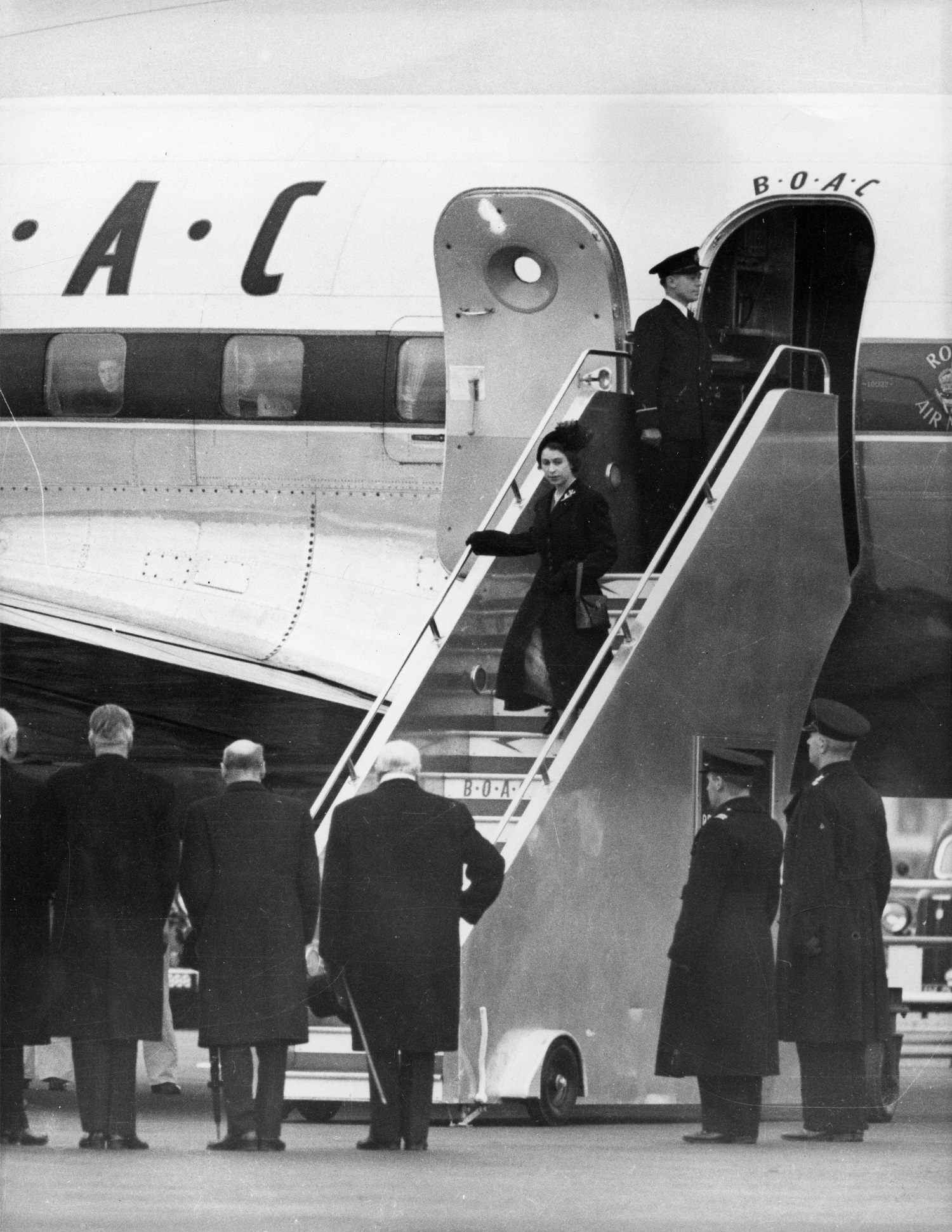
The demise of the Crown was followed by measures to confirm the accession of the king or queen, and to declarations being made by the sovereign about the conduct of their reign. Two of the sovereigns who had inherited the Crown since 1685 were not even within the realm when their reign began, as Queen Anne’s successor was at his home in Hanover when he inherited the throne in 1714, and more than two centuries later, Princess Elizabeth was in Kenya when her father died at Sandringham.
The accession arrangements, including the proclamation of the formal style and titles to be used by the sovereign, have invariably been organised by the officials of the Privy Council, and since 1685, The Gazette has noticed the meeting of counsellors and other public figures at what is usually referred to as the accession council. Such an approach, involving privy counsellors rather than members of the government or the House of Commons, was retained even after the succession began to be regulated by statute at the start of the 18th century.
Since 1685, the sovereign has always made a personal declaration at the accession council, and has usually referred to the circumstances of their coming to the throne, as well as dealing with other aspects of their royal inheritance. This happened in 1901, when Queen Victoria’s successor stated that he would be known as King Edward rather than King Albert (Gazette issue 27270), and in 1936 when it was announced that the former sovereign would become the duke of Windsor (Gazette issue 34349).
Coronation, preservation and delegation
All the kings and queens regnant who have ascended the throne since 1685 have been crowned in Westminster Abbey, with the exception of Edward VIII.
The Gazette has reported 21 coronations of kings and queens regnant and queens consort, in addition to some of the statutes that were introduced to preserve the royal authority, or to delegate that authority should the need arise. The need to do so arose when the sovereign was unable to act, and The Gazette reported legislation that allowed a regent or guardian to be appointed if, for example, the sovereign was out of the realm, or when the heir to the throne was under 18 years of age, or because the sovereign was infirm and incapacitated.
The royal authority has also been delegated to small groups of senior public figures, who were usually known by the title of lord justice or counsellor of state. The Gazette reported many occasions when this happened, starting in the 1690s when justices administered the government while King William returned to his court and estates in Holland, through to the present reign when counsellors acted during Queen Elizabeth’s visits to Commonwealth realms and foreign heads of state.
Cyphers, seals and emblems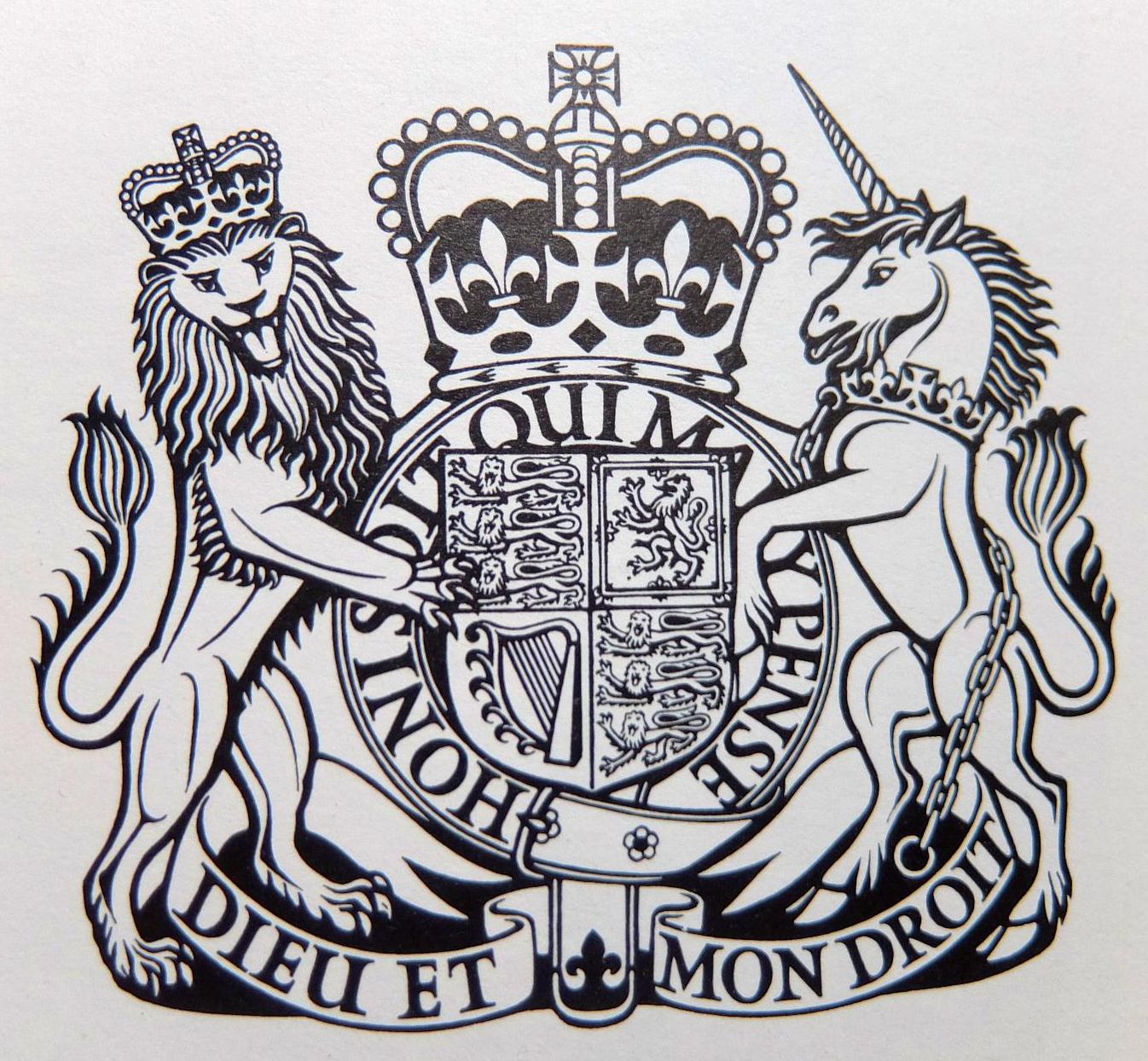
A succession to the Crown has typically seen the effigy and the style and titles of the sovereign being introduced in official settings, as in 1685 when the portrait and cypher of King Charles were replaced by those of his brother, King James.
The prominent position that is given to the sovereign’s emblems in national settings is evident today, as the late Queen’s portrait and cypher (E.II.R. for Elizabeth Regina) appear on items such as banknotes, coins, medals and stamps. This feature of the modern monarchy was demonstrated in The Gazette in March 2022, when it published a royal proclamation that approved a series of coins to be made at the Royal Mint which combined the Queen’s effigy with a design that reflected the role of the sovereign in bestowing honours (Gazette issue 63646).
One important change that is made on the accession of a new sovereign relates to the seal or seals that are used to authenticate letters patent and other important state documents, as a new design was introduced towards the start of each reign, with the exception of Edward VIII who had left the throne before the process could be completed.
There was also the question of the sovereign’s coat of arms. An accession did not always lead to a new design, but there were occasions when the heraldic display was altered to reflect dynastic changes, as in 1702, when Queen Anne removed Prince William of Orange’s Dutch lion; and in 1714, when King George added emblems for the House of Hanover.
A royal proclamation of 1837 established the version of the royal arms that appears on the title page of the modern Gazette when the Hanoverian ensigns were removed after the personal union of the kingdoms came to an end.
Swords and spurs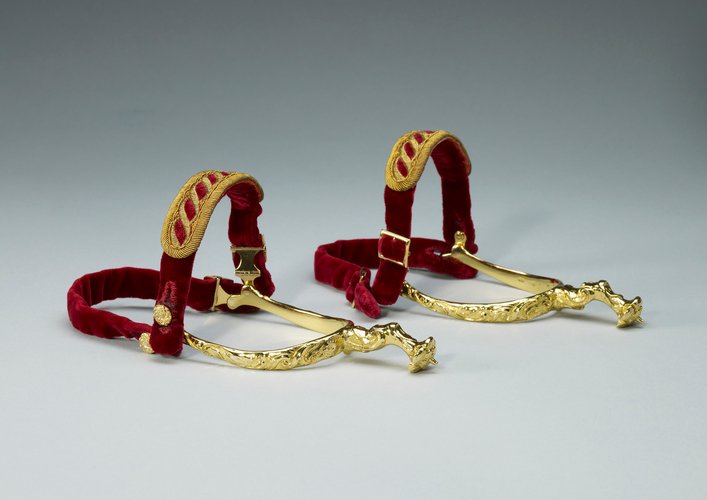
Having secured the succession and survived the accession council, and after commissioning a great seal, the next step in investing the sovereign with his or her royal powers was the coronation.
The ceremonial has been reported in The Gazette since 1685, when King James was presented with a sword and spurs, two parts of the regalia that served as symbols of his regal power, and in particular his role as the fountain or source of justice and of honour (Gazette issue 2028).
The modern Gazette demonstrates the extent to which the authority that is symbolised by the sword and spurs is still relevant. During 2021, for example, letters patent were issued to appoint judges of the High Court and the Court of Appeal, and royal assent was given to bills passed by the Northern Ireland Assembly and the Scottish Parliament. Similarly, the sovereign’s role as the fountain of honour was illustrated by The Gazette of December 2022, which referred to the King signifying his intention to confer the honour of knighthood; giving orders for appointments to the Order of the British Empire; and approving the award of various medals (Gazette issue 63918).
The Gazettes of 2021-22 tell only part of the story, as the person who possesses the royal authority has limited control over how it may be exercised in relation to matters of justice and honour, and instead the will of Parliament and the actions of the King’s ministers now prevail. One commentator considered how the role of the sovereign and the government might be viewed by a reader of The Gazette:
“An inquiring foreigner reading the London Gazette for the first time would at once imagine that England was under an efficient despotism, that the King was invested with absolute personal power. To outward appearances it is the King who distributes all the great offices of state: the patronage which governs affairs ecclesiastical and temporal is apparently solely in his hand; foreign policy is determined in his name; it is he who appoints ministers, opens and prorogues Parliament, and who is the source and fountain-head of all acts governing the realm.
"Yet if this inquiring foreigner were next to turn his attention to the British press, he might imagine that the Prime Minister and not the King was the despot. He would see that, although the people claimed the right of legislating through majorities, a committee of the representatives of the electoral majority is the sole executive government of the state, and the chairman of this committee, the Prime Minister, is alone vested with powers that have the colouring of despotism. Nominally, the Prime Minister and the other ministers of state are the King’s servants: in point of fact they are his masters….
"The truth would seem to lie between these two views.”
(Sir Sidney Lee, King Edward VII (1927), Volume II, page 31).
The Crown’s authority was certainly evident during the 20th century, as in 1910 when a parliament bill sought to limit the ability of the House of Lords to frustrate the will of the elected House of Commons, and the King assented to creating enough peers to guard against a bill being defeated by any possible combination of the different parties in opposition.
The sovereign’s role in 1910 may have been exceptional, but The Gazette demonstrates the extent to which the Crown is still actively engaged in the administration of justice and the award of honours, and so the inquiring foreigner will see that high judicial offices are still granted by the King, and that orders, decorations and medals are still conferred in the name of the sovereign rather than the state, even although the recipients are mainly selected by ministers who are accountable to Parliament.
The Gazette and successions
The succession of sovereigns has had an obvious effect on the content of The Gazette, which this series of articles examines by reference to the various issues that were mentioned earlier. The comments are set out in broad chronological order and follow the sequence of the reigns. They also reflects a 'Gazette’s eye' view of the subject, and the different reporting practices that have applied since 1685.
Most of the 17th-century editions were dominated by events in Europe and so provide some sort of context in which to place developments relating to the succession to the Crown, while the later Gazettes provide a bare record of official appointments rather than any national or international news.
This difference in The Gazette’s treatment of contemporary events saw the early accession councils being noticed in the same editions as reports about religious conflict in England, rebellion in Scotland, and war in Europe, while steps were being taken in London, Edinburgh and Dublin to secure the succession to the Crown.
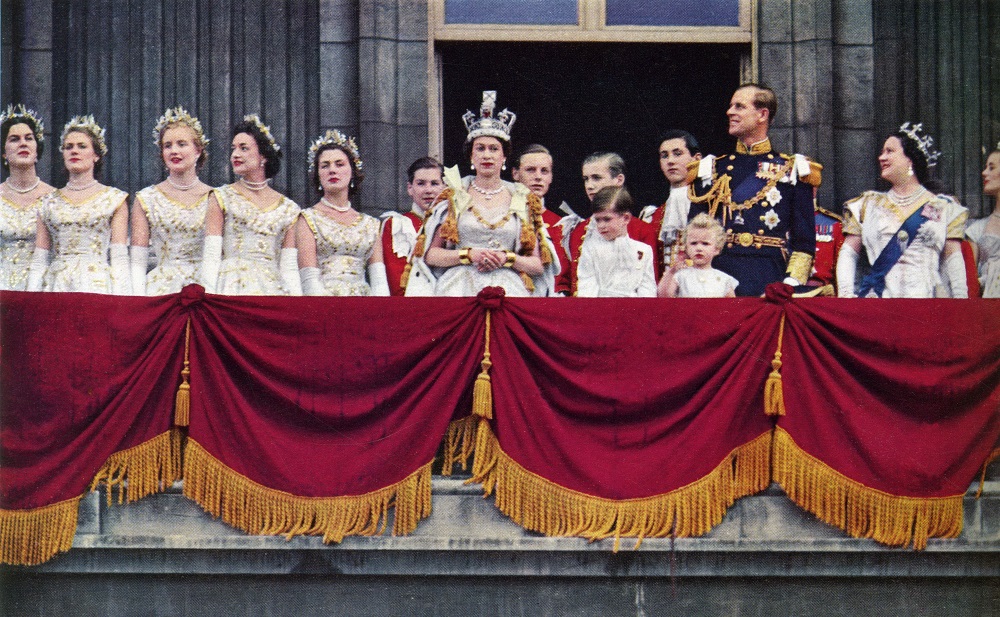
About the author
Russell Malloch is a member of the Orders and Medals Research Society and an authority on British honours.
Let us know what you think of this article by getting in touch. All feedback is welcome.
See also
Queen Elizabeth II - In Memoriam
Gazette Firsts: The history of The Gazette and royal coronations
This month in history: Edward VIII abdication crisis
This month in history: The coronation of Queen Elizabeth II
Images
The Gazette
Getty Images
The Print Collector / Alamy Stock Photo
Royal Collection Trust / © Her Majesty Queen Elizabeth II 2022
Russell Malloch
Royal Collection Trust / © Her Majesty Queen Elizabeth II 2022
© Illustrated London News Ltd/Mary Evans
Publication updated: 8 February 2023
Any opinion expressed in this article is that of the author and the author alone, and does not necessarily represent that of The Gazette.
